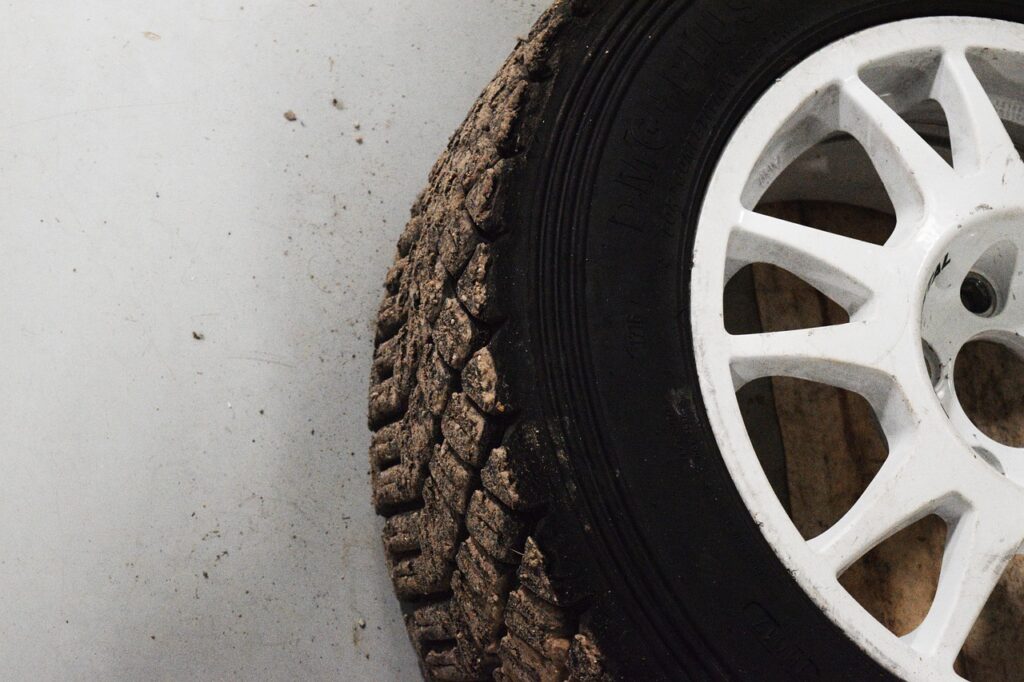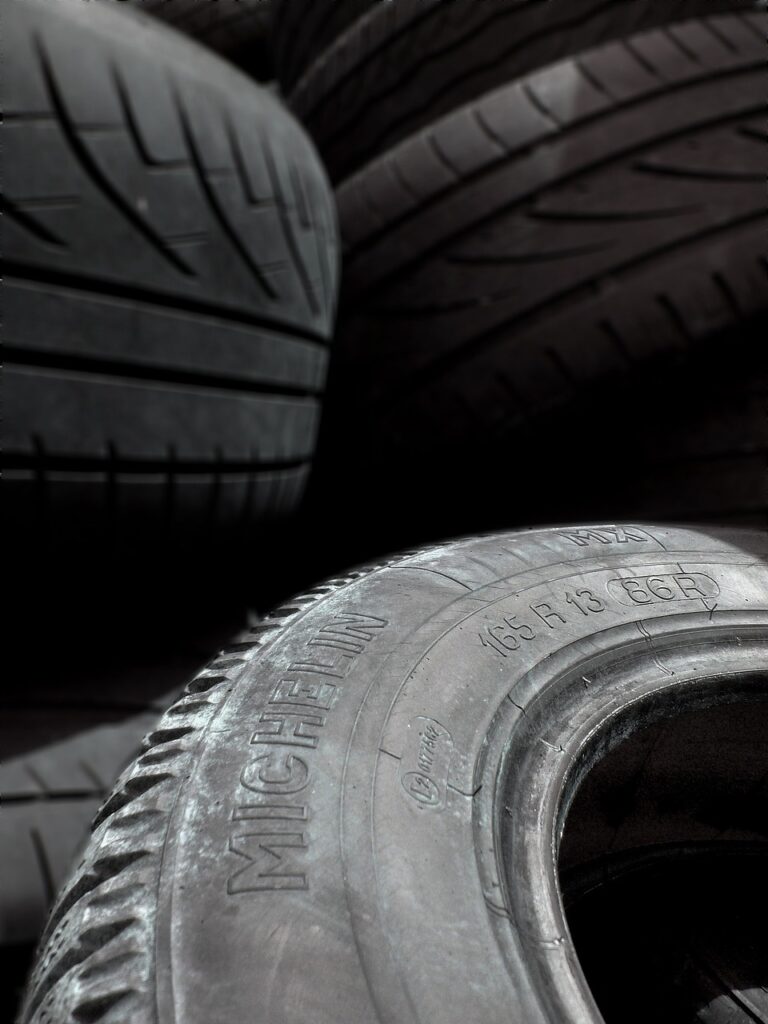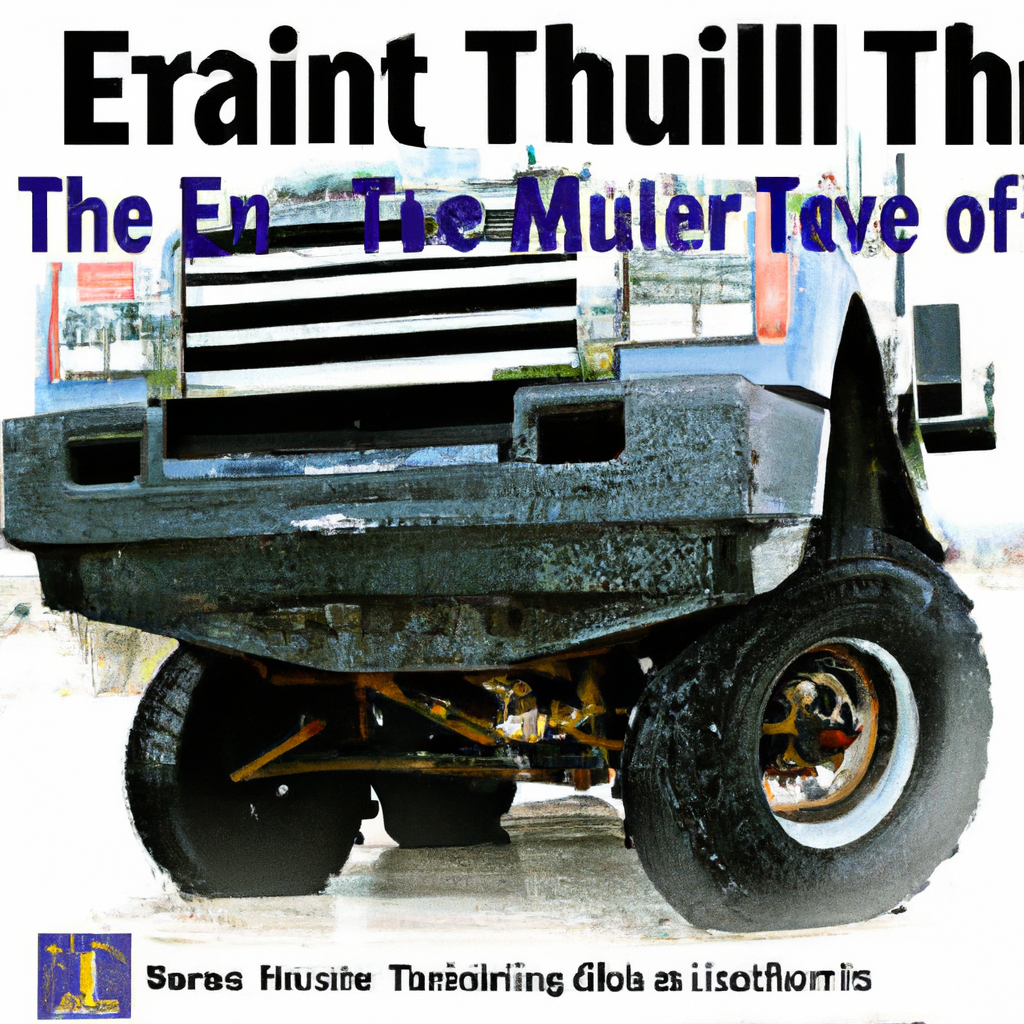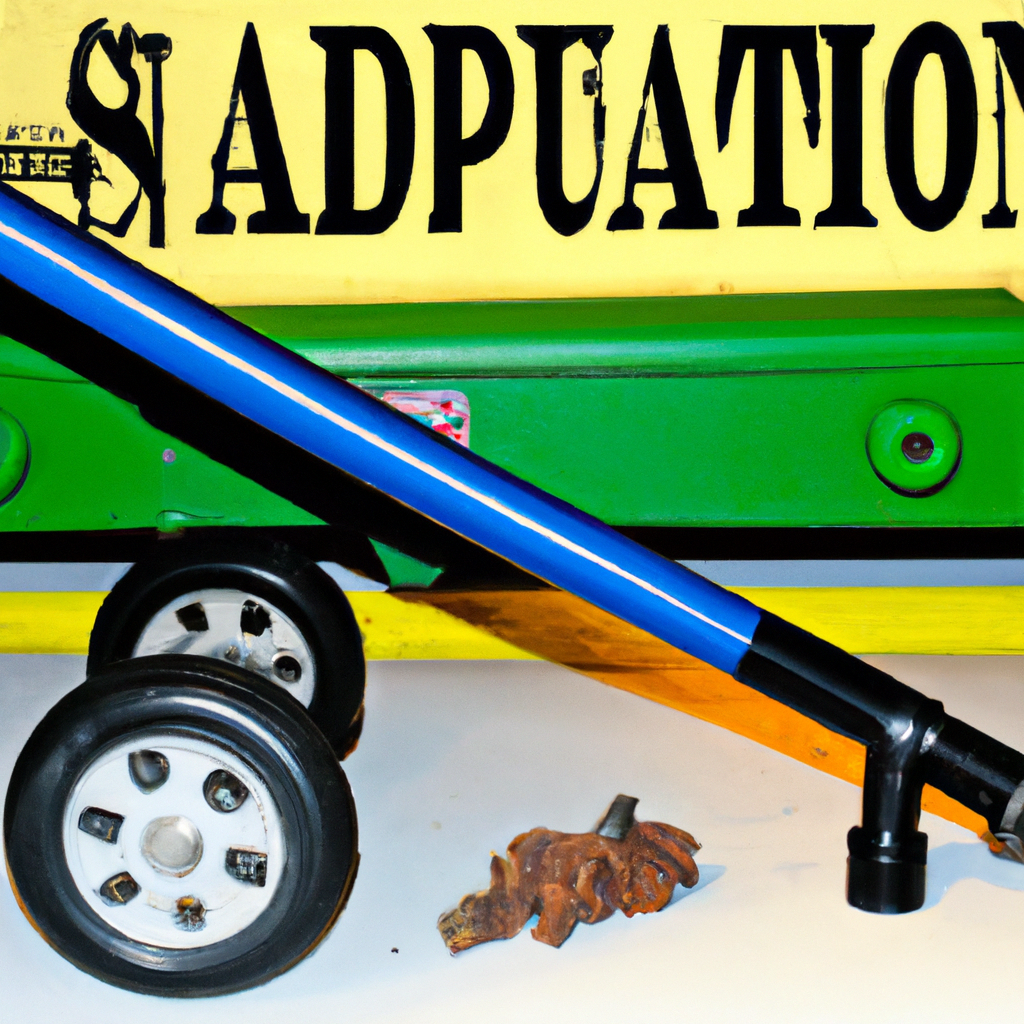If you’ve ever wondered about the specific maintenance requirements for run-flat tires, you’re not alone. These unique tires have gained popularity in recent years due to their ability to keep you on the road even after a puncture. However, their innovative design also means that they may require different care and attention compared to traditional tires. In this article, we’ll explore the specific maintenance considerations for run-flat tires, ensuring that you have all the information you need to keep these tires in top shape and maintain their performance and reliability. So, let’s dive in and discover what needs to be done to ensure your run-flat tires stay in tip-top condition.

Regular Inspections
Regular inspections are essential for maintaining the performance and safety of your run-flat tires. By conducting visual inspections, you can identify any potential issues before they become major problems. Take a close look at the tread pattern and sidewalls of your tires, checking for any signs of damage, such as cuts, bulges, or uneven wear. If you notice any abnormalities, it’s important to address them promptly to prevent further damage or tire failure.
Visual Inspections
During visual inspections, pay attention to the tread depth of your run-flat tires. Adequate tread depth is crucial for maintaining traction and handling on the road. The minimum legal tread depth is typically 2/32 of an inch, but for optimal performance, it is recommended to have at least 4/32 of an inch. You can use a tread depth gauge or the “penny test” to measure the depth. Simply insert a penny into the tread with Lincoln’s head facing down. If you can see the top of Lincoln’s head, it’s time to replace your tires.
Tread Depth Checks
Checking the tread depth regularly ensures that your run-flat tires can effectively grip the road in all conditions. As the tread wears down, the tires become less effective at channeling water away, which can increase the risk of hydroplaning. It’s important to maintain adequate tread depth to ensure your tires provide the necessary traction and handling performance.
Pressure Checks
Proper tire pressure is vital for maintaining the overall performance and longevity of your run-flat tires. Underinflated tires can cause increased rolling resistance, reduced fuel efficiency, and uneven wear. On the other hand, overinflated tires can result in a harsher ride and increased risk of tire damage. Regularly check the tire pressure with a reliable gauge and refer to the manufacturer’s recommended pressure levels. Remember to check the spare tire as well, as it may be prone to losing air over time.
Alignment and Balancing
Alignment and balancing are crucial aspects of tire maintenance that are often overlooked. Proper alignment ensures that all four tires are straight and parallel, providing optimal handling and tire wear. Failure to align your run-flat tires correctly can result in uneven wear, reduced fuel efficiency, and compromised safety.
Importance of Proper Alignment
Misalignment can occur due to various factors such as hitting potholes, curbs, or driving on rough roads. It’s important to have your run-flat tires aligned by a professional regularly or whenever you notice any signs of steering pulling, vibrations, or uneven wear. Proper alignment will ensure that your tires wear evenly and maintain optimal contact with the road surface.
Balancing the Tires
Balancing involves distributing the weight evenly across your run-flat tires. Unbalanced tires can cause vibrations, leading to a less comfortable ride and potential damage to suspension components. When you mount new tires or notice vibrations at higher speeds, it’s important to have your tires balanced. A professional technician will use specialized equipment to balance the tires, ensuring a smooth and safe driving experience.
Rotation
Rotating your run-flat tires is an essential maintenance practice that helps promote even tire wear and extends the overall lifespan of your tires. By moving the tires from one position to another on your vehicle, you can distribute the wear more evenly, allowing each tire to experience different driving conditions.
Even Tire Wear
Tire wear can vary depending on various factors, such as driving habits, road conditions, and vehicle weight distribution. Front tires tend to wear more quickly on the outer edges, while rear tires may wear more evenly. By rotating the tires regularly, you can help equalize the wear pattern, extending the life of the tires and maximizing their performance.
Frequency of Rotation
The frequency of tire rotation depends on several factors, including the type of vehicle and the manufacturer’s recommendations. As a general guideline, it is recommended to rotate your run-flat tires every 6,000 to 8,000 miles or as specified in your vehicle’s owner’s manual. However, if you notice any signs of uneven wear or abnormal tire behavior, such as vibrations or pulling, consider rotating the tires sooner to maintain optimal performance.
Repairs and Punctures
Even with the advanced technology of run-flat tires, they are not immune to punctures and damage. Proper repair procedures are essential to ensure the continued performance and safety of your run-flat tires.
Limited Repairability
Run-flat tires have limited repairability due to their reinforced sidewalls and the potential for internal damage. It is crucial to consult a tire professional to assess whether a punctured run-flat tire can be repaired safely. In some cases, the puncture may be too severe or in an inappropriate location, rendering the tire unrepairable.
Proper Puncture Repair Procedures
If a repair is possible, it is important to follow the proper puncture repair procedures for run-flat tires. These procedures typically involve patching the tire from the inside and ensuring that the repair does not compromise the integrity of the tire. Never attempt to repair a run-flat tire yourself, as improper repairs can result in further damage or tire failure. Always consult a qualified tire professional to ensure the repair is done correctly.

Spare Tire Considerations
Many modern vehicles, including those equipped with run-flat tires, no longer come with a spare tire. It is important to understand the implications of not having a spare tire and the alternative options available.
Absence of Spare Tire
The absence of a spare tire in your vehicle may initially seem concerning, but run-flat tires are designed to provide extended mobility even in the event of a puncture. They feature reinforced sidewalls that can support the weight of the vehicle for a limited distance at a reduced speed. However, it is crucial to remember that run-flat tires have limitations and should not be driven on for long distances or at high speeds after a puncture.
Emergency Tire Repair Kits
To supplement the absence of a spare tire, many vehicles now come equipped with emergency tire repair kits. These kits typically consist of a sealant and an inflator, which can temporarily repair minor punctures and provide enough air to reach a tire repair facility. However, it is important to note that these repair kits may not be suitable for all types of tire damage, and professional assistance may still be required. Familiarize yourself with the instructions provided in your vehicle’s emergency tire repair kit and ensure it is in good working condition.
Roadside Assistance
Roadside assistance can be a valuable resource for owners of run-flat tires or any other vehicle. It provides peace of mind knowing that help is just a phone call away in case of emergencies or unforeseen situations.
Importance of Roadside Assistance
The importance of roadside assistance cannot be overstated, especially when dealing with run-flat tires. If you experience a puncture or tire failure, having access to roadside assistance can save you from the hassle of changing the tire yourself or the inconvenience of being stranded on the side of the road. Roadside assistance services often include tire change services, emergency fuel delivery, jump-starting your vehicle, and towing if necessary.
Options for Roadside Assistance Programs
There are various options available for roadside assistance programs, including those provided by automobile associations, insurance companies, and vehicle manufacturers. When selecting a roadside assistance program, consider factors such as coverage limits, response times, and additional benefits offered. Evaluate your needs and choose a program that suits your requirements and budget. Having roadside assistance can provide peace of mind and ensure prompt assistance in case of tire emergencies or other roadside incidents.

Manufacturer Recommendations
Following the manufacturer’s recommendations is crucial for maintaining the optimal performance and safety of your run-flat tires. Manufacturers conduct extensive research and testing to determine the best practices for tire maintenance.
Following Manufacturer Guidelines
The manufacturer’s guidelines for tire care and maintenance can be found in your vehicle’s owner’s manual or the tire manufacturer’s documentation. These guidelines typically include recommendations for tire pressure, rotation intervals, tire inspections, and other important considerations. By adhering to these guidelines, you can ensure that your run-flat tires perform as intended and have a longer lifespan.
Using Approved Tire Suppliers
When it comes to replacing your run-flat tires, it is important to use approved tire suppliers that follow the manufacturer’s specifications. Genuine run-flat tires from reputable manufacturers are designed to meet specific performance and safety standards. Purchasing tires from approved suppliers ensures that you are getting high-quality products that are compatible with your vehicle’s systems and meet the necessary criteria for run-flat capabilities.
Avoiding Damage
Preventing damage to your run-flat tires is crucial for maintaining their performance and safety. By following a few simple tips, you can minimize the risk of tire damage and prolong the life of your tires.
Avoiding Potholes and Curbs
Potholes and curbs can cause significant damage to your run-flat tires. Whenever possible, try to avoid driving over potholes or hitting curbs. Be vigilant while driving and stay aware of the road conditions ahead. Slow down when encountering potholes and maintain a safe distance from curbs to minimize the risk of tire damage.
Proper Parking Techniques
Proper parking techniques can also help prevent tire damage. Avoid parking too close to curbs or objects that can scrape against the tires. When parallel parking, make sure to align the tires properly with the curb to avoid unnecessary contact. Additionally, be cautious when parking in areas with sharp objects or construction debris that may puncture the tires.

Storage
Proper storage of your run-flat tires is essential to maintain their condition during periods of non-use. Following the recommended storage practices will help preserve the performance and extend the lifespan of your tires.
Proper Storage Methods
When storing your run-flat tires, clean them thoroughly to remove any dirt or debris that could accelerate deterioration. Store the tires in a cool, dry, and well-ventilated area away from direct sunlight. It is advisable to keep the tires off the ground and place them on racks or tire stands to avoid distortion or flat spots. If storing tires for an extended period, consider wrapping them in airtight plastic bags to prevent exposure to moisture or atmospheric contaminants.
Temperature and Humidity Considerations
Extreme temperatures and high humidity can negatively affect the condition of your run-flat tires during storage. Avoid storing the tires in areas prone to temperature fluctuations, such as uncontrolled garages or sheds. Temperature extremes can cause the rubber compounds to deteriorate faster, leading to premature aging and reduced performance. Choose a storage location that maintains a moderate and consistent temperature, ideally between 50°F and 70°F, with low humidity levels to ensure the tires remain in optimal condition.
Replacing Run-flat Tires
Knowing when to replace your run-flat tires is crucial for maintaining safety and performance. As with any type of tire, run-flat tires wear out over time and require replacement to ensure continued reliability.
Knowing When to Replace
Monitoring the tread depth and overall condition of your run-flat tires will help determine when replacement is necessary. As mentioned earlier, the minimum legal tread depth is 2/32 of an inch, but it is recommended to replace your tires when they reach 4/32 of an inch to maintain optimal traction and performance. Additionally, if you observe any signs of damage, such as cuts, bulges, or sidewall cracking, it is crucial to replace the tires as they can compromise safety.
Choosing the Right Replacement Tires
When replacing your run-flat tires, it is important to select the right replacement tires that match the specifications and performance characteristics of your vehicle. Consult your vehicle’s owner’s manual or seek recommendations from a qualified tire professional to ensure you choose tires that are compatible with your vehicle’s systems and meet your driving needs. Consider factors such as tread pattern, traction, handling, and overall quality to make an informed decision and maximize the performance of your new run-flat tires.
In conclusion, maintaining your run-flat tires requires regular inspections, alignment and balancing, rotation, proper repair procedures, and considering alternative options in the absence of a spare tire. Additionally, following manufacturer recommendations, avoiding damage, proper storage, and knowing when to replace your run-flat tires are vital for optimal performance and safety. By adopting these maintenance practices and being mindful of the specific considerations for run-flat tires, you can extend their lifespan, maximize their performance, and ensure a safer driving experience.


